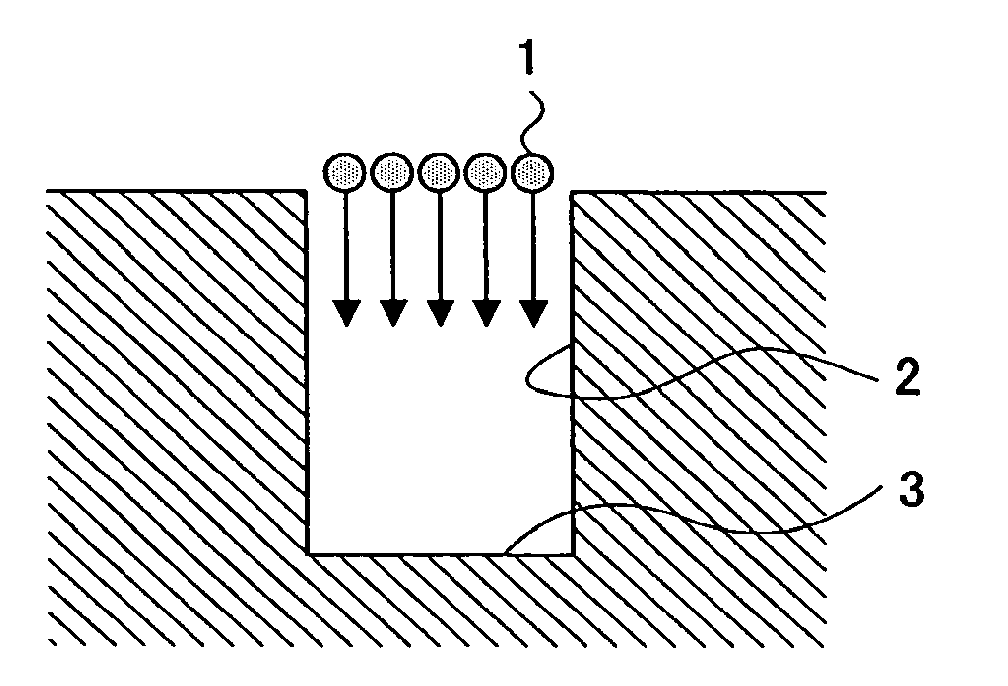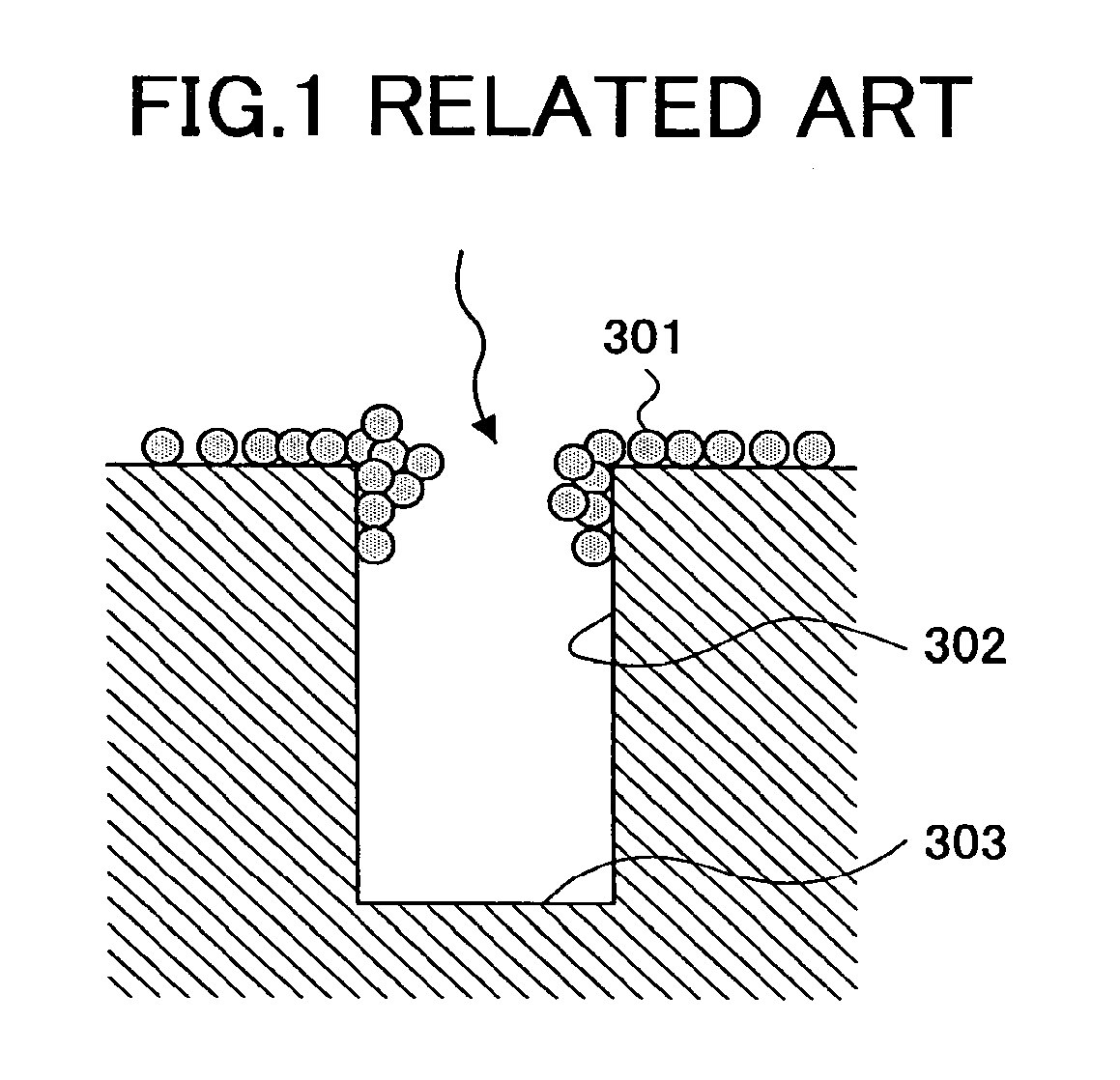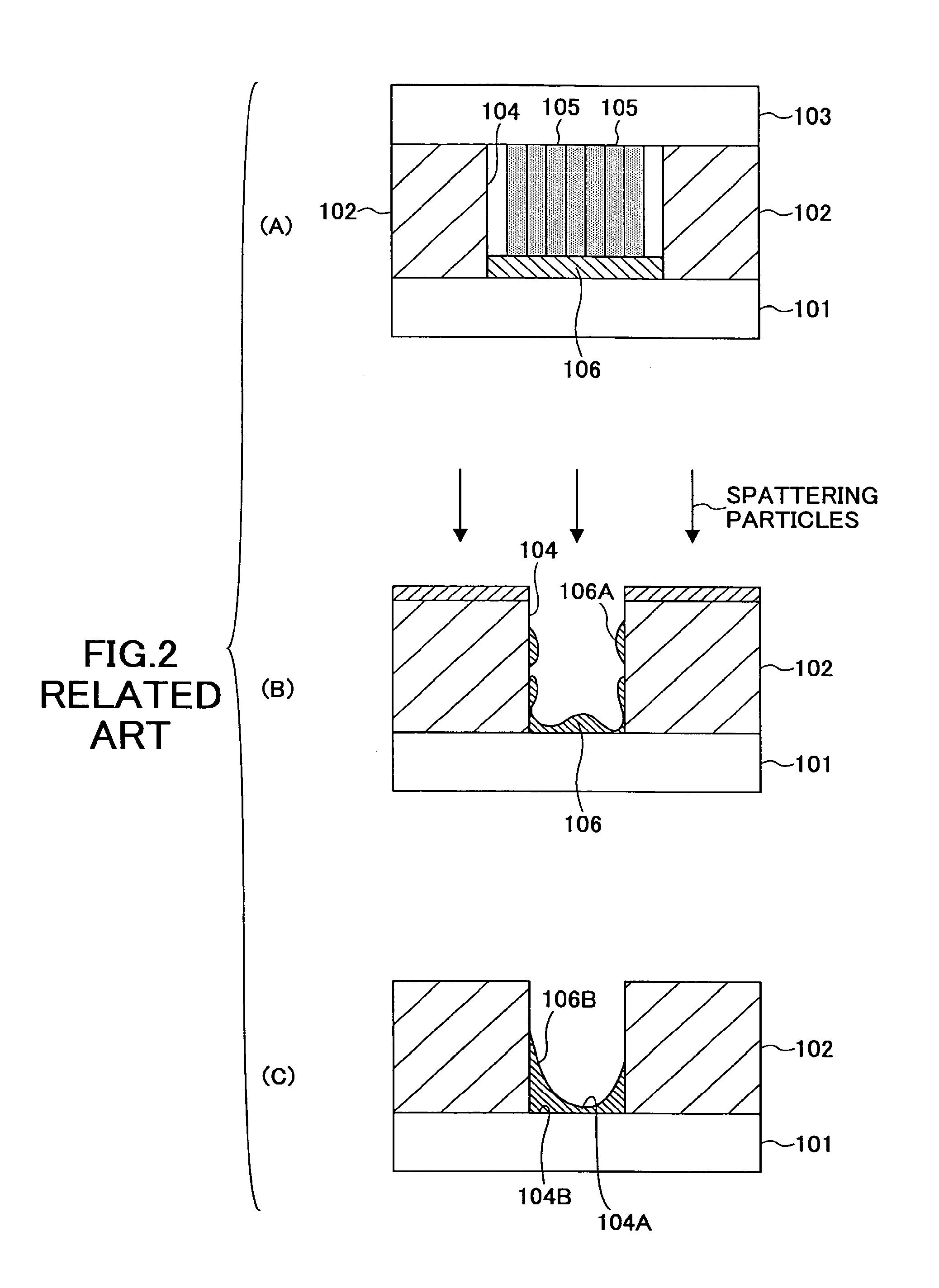Deposition method and a deposition apparatus of fine particles, a forming method and a forming apparatus of carbon nanotubes, and a semiconductor device and a manufacturing method of the same
a technology of carbon nanotubes and deposition methods, which is applied in the direction of nanoinformatics, nuclear engineering, railway components, etc., can solve the problems of difficult to generate carbon nanotubes with stable composition, difficult to avoid exposing the surface of particles to air and such impurities, and difficult to grow carbon nanotubes and control their diameter
- Summary
- Abstract
- Description
- Claims
- Application Information
AI Technical Summary
Benefits of technology
Problems solved by technology
Method used
Image
Examples
first embodiment
[0107]In order to deposit particles substantially on the bottom part in a groove structure having a high aspect ratio, such as the structure shown in FIG. 3, particles 1 having the same moving direction may be led to a bottom part 3 of a groove structure 2 having a high aspect ratio. In this case, it is necessary to form a particle beam wherein directions of particles are arranged in advance so as to have high directivities; and minimize disturbance, namely diffusion, of the particle direction due to a collision of gas molecules.
[0108]The groove structure having a high aspect ratio is assumed with a depth / width that is more than 1 / 1; that is, the depth is larger than the width, and the width is less than approximately 2 μm calculated under assumption that a particle size is approximately 20 nm.
[0109]More specifically, a deposition apparatus such as shown in FIG. 4 may be used. The deposition apparatus 4 includes a particle generation part 11, a particle charging part 12 for charging...
first example of first embodiment
[0124]Next, a first example of the first embodiment of a deposition method is explained. In addition, a deposition apparatus of fine particles, and a forming method and a forming apparatus of carbon nanotubes, are explained.
[0125]More specifically, in the first example, a deposition apparatus and method whereby particles are deposited substantially on a bottom part of a groove structure having a high aspect ratio such as a via hole forming part of a semiconductor wiring, and a method for growing carbon nanotubes by using the deposited particles as catalysts, are described.
[0126]FIG. 7 is a schematic view showing a schematic structure of a particle deposition apparatus of the first example of the first embodiment of the present invention. Nickel (Ni), Iron (Fe), Cobalt (Co), or the like is suitable as a catalyst particle. In this example, the Ni particle is used as the catalyst particle.
[0127]In this example, the particles are generated by using laser ablation. A Ni substrate 400 is ...
second example of first embodiment
[0140]Next, a second example of the first embodiment is explained. FIG. 11 is a schematic view showing a fine particle beam irradiation part of a particle deposition apparatus of the second example of the first embodiment.
[0141]In this example, the Ni particles are converged at the vacuum room 408 keeping a pressure of 102 Pa, for example, by using an aerodynamic lens 421. The aerodynamic lens 421 includes a plurality of circular plates 421a having holes. The circular plates 421a forming a lens are provided in a flow of gas. The particle beam is converged by using inertia of the particles when the flow repeats contraction and expansion. The proper diameter of the holes of the circular plates depends on the particle size, gas flow rate, and a pressure. In order to converge particles having a diameter of 5 nm under conditions of the above mentioned amount of flow and pressure, it is necessary to provide circular plates having holes whose diameter is approximately 12 mm. By arranging c...
PUM
| Property | Measurement | Unit |
|---|---|---|
| particle diameters | aaaaa | aaaaa |
| particle diameters | aaaaa | aaaaa |
| diameter | aaaaa | aaaaa |
Abstract
Description
Claims
Application Information
 Login to View More
Login to View More - R&D
- Intellectual Property
- Life Sciences
- Materials
- Tech Scout
- Unparalleled Data Quality
- Higher Quality Content
- 60% Fewer Hallucinations
Browse by: Latest US Patents, China's latest patents, Technical Efficacy Thesaurus, Application Domain, Technology Topic, Popular Technical Reports.
© 2025 PatSnap. All rights reserved.Legal|Privacy policy|Modern Slavery Act Transparency Statement|Sitemap|About US| Contact US: help@patsnap.com



